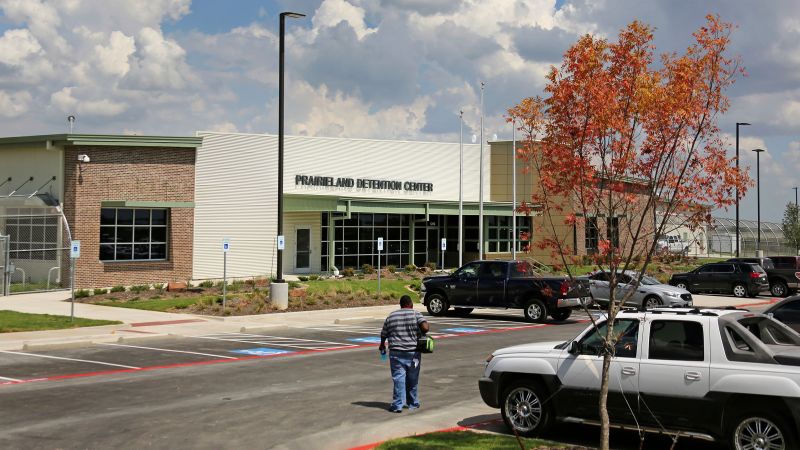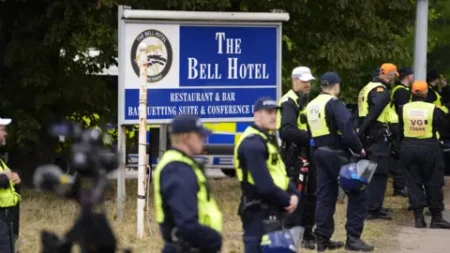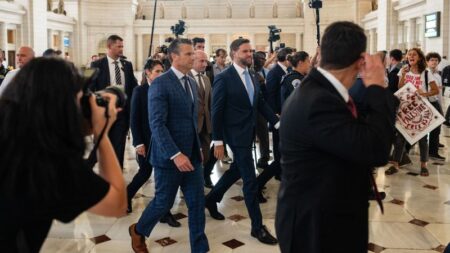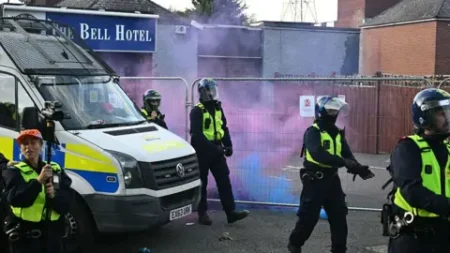On July 4, 2023, a brazen and organized attack occurred at an immigration detention facility situated near Fort Worth, Texas. Reports indicate that a group of assailants utilized fireworks and vandalism as a diversionary tactic to draw attention away from their actual intent, which was to shoot at officers stationed at the facility. The assailants allegedly positioned themselves strategically in a line of trees across the street, where they launched an ambush against law enforcement personnel. These actions heightened concerns regarding the safety of federal officers and security measures at facilities overseen by the Department of Homeland Security (DHS).
Just a few days later, in McAllen, Texas, approximately 500 miles south of Fort Worth, a separate yet violent incident unfolded when a man opened fire on a Border Patrol facility. He managed to shoot multiple rounds, injuring one officer in the knee before being neutralized by return gunfire from responding agents. Although the two incidents do not appear to be directly related, they contributed to increasing anxiety among DHS officials and led to enhanced security measures being implemented across various facilities, a move that prompted discussions about the dangerous environment in which immigration officers now operate.
The administration has characterized these violent encounters as indicative of a broader climate of hostility directed toward immigration enforcement personnel, a sentiment they link to the criticisms of former President Donald Trump’s immigration policies. Critics of the administration, while firmly denouncing violence, have argued that Trump’s doctrines—such as ramped-up immigration raids and the deployment of masked agents—have fostered an atmosphere of fear and resentment that may lead to extreme acts of violence like those observed in Texas.
DHS has reported alarmingly high increases in assaults against its officers, citing a 400% uptick in incidents observed in May alone, and an escalation reaching over 800% over the previous year by mid-summer. By mid-July, there were only 93 reported assaults on officers, a stark contrast to just ten during the same timeline the previous year. This stark increase in violence reflects a more profound societal unrest regarding immigration issues and may serve to create a security crisis for officers tasked with enforcement duties.
ICE’s Acting Director, Todd Lyons, expressed a mixture of anger and fear in response to the assaults, particularly highlighting his concerns over officer safety. His primary anxiety stems from a desire to avoid losing an officer, a fear he indicated affects his ability to sleep at night. Further analyzing these sentiments, John Sandweg, a former acting director of ICE, noted that the nature of threats today is significantly different from years past—historically, concerns revolved around general threats during routine arrests, while current scenarios involve targeted attacks on officers.
The Fort Worth incident was uniquely coordinated, as it involved a group dressed similarly in militaristic attire, employing tactics not typically observed in confrontations with federal law enforcement. Attacking the Prairieland Detention Facility, the group used fireworks as a distraction while paint-spraying derogatory slogans on compound vehicles. A local officer responding to the commotion was critically shot but, fortunately, survived the wound.
Benjamin Hanil Song, a former Marine, was apprehended for purchasing the rifles utilized in the ambush, and 14 individuals were charged in connection with the attack, indicating a possible wider conspiracy. Many of those charged are believed to have assisted Song following the ambush, showcasing a disturbing level of planning and collaboration.
In the changing landscape of U.S. immigration enforcement, ongoing attacks on ICE and Border Patrol facilities have surfaced alongside a stark increase in violent confrontations. Alarmingly, after the Fort Worth attack, another incident occurred in which Ryan Luis Mosqueda attacked officers outside a Border Patrol facility in McAllen, Texas, severely injuring an officer before being shot dead. Mosqueda’s actions prompted continued scrutiny of the systemic issues stemming from federal immigration policies and their potentially violent repercussions on both officers and the communities they interact with.
Both incidents highlight a troubling crescendo of violence towards immigration enforcement officers amid heightened tensions surrounding U.S. border policies. While attempted measures such as increased funding for additional staffing show the administration’s response to the rise in violence, debates persist regarding the ethical implications of aggressive enforcement and the consequences of such tactics on public safety at large. The current state of affairs continues to evolve as critics and supporters of enforcement policies clash over potential paths forward, with safety and security at the forefront of ongoing discussions.











